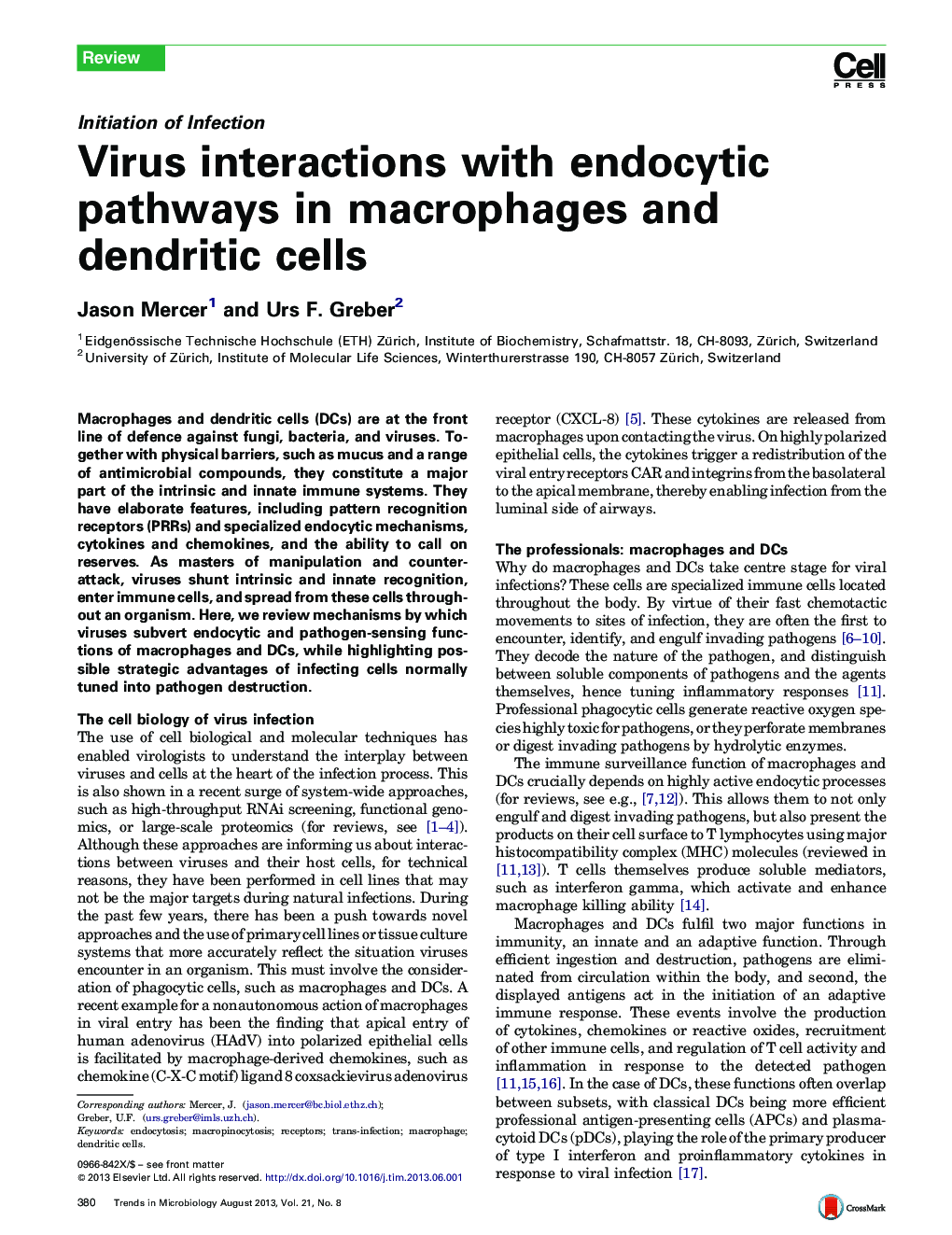| Article ID | Journal | Published Year | Pages | File Type |
|---|---|---|---|---|
| 3421923 | Trends in Microbiology | 2013 | 9 Pages |
•A wide range of viruses can successfully infect macrophages and dendritic cells (DCs).•Viruses manipulate pattern recognition receptors (PRRs) for entry as well as binding.•Does constitutive macropinocytosis provide a free ride for virus entry?•Viruses use diverse strategies to subvert destruction and detection by antigen-presenting cells (APCs).
Macrophages and dendritic cells (DCs) are at the front line of defence against fungi, bacteria, and viruses. Together with physical barriers, such as mucus and a range of antimicrobial compounds, they constitute a major part of the intrinsic and innate immune systems. They have elaborate features, including pattern recognition receptors (PRRs) and specialized endocytic mechanisms, cytokines and chemokines, and the ability to call on reserves. As masters of manipulation and counter-attack, viruses shunt intrinsic and innate recognition, enter immune cells, and spread from these cells throughout an organism. Here, we review mechanisms by which viruses subvert endocytic and pathogen-sensing functions of macrophages and DCs, while highlighting possible strategic advantages of infecting cells normally tuned into pathogen destruction.
